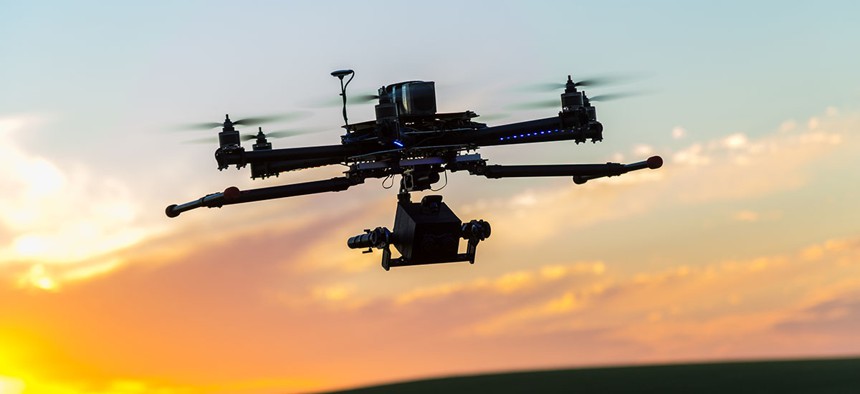How 5G Enhances Situational Awareness and Optimizes Public Safety Response
Presented by
Verizon

Between drones, body cameras and other devices, public safety leaders have a vast array of data and video at their fingertips. These caches of information create a 360-degree view of an emergency situation, but the sheer volume can be overwhelming. With strategic implementation of 5G, public safety leaders are able to enhance situational awareness, resulting in faster, more precise emergency coordination and response.
"There is an avalanche of data," says Tony Dolezal, a 5G and multi-access edge computing, or MEC, specialist with the Public Sector Field Marketing group at Verizon Wireless. "The trick is to bring that data in quickly enough, and have the computing power strong enough, to create actionable analytics so that the commander for a situation can make decisions in near-real time."
Every Second Counts
When every moment is critical, mere seconds can be the difference between life and death. In fact, Dolezal said experts estimate 10,000 lives could be saved each year by reducing 911 response times by 1 minute.
As the number of law enforcement agencies with access to video-capturing devices such as body cameras and drones expands, maximizing the speed at which the information can be transmitted, processed and analyzed is essential to optimally using the footage.
"All of those body cameras, all of those sensors are going to require low latency, but also bigger bandwidth to be able to transfer in real time," says Jason Mitchell, a senior manager with the Verizon Frontline Crisis Response team.
Network latency is the time it takes for data to travel between two points. High latency results in noticeable lags. Such lags are frustrating enough in casual use — during a disaster, they can put lives at risk. The low latency of 5G enables information to travel faster than the blink of an eye.
Assessing Emergencies in Real Time
For HD video, in particular, 5G is a game changer. A 5G-enabled autonomous drone can capture views from all angles of an emergency. It also has the bandwidth to stream that HD video back to the command center location, as well as the low latency to reduce transmission delays.
"The ability to have multiple HD video feeds brings back better information to be analyzed at the MEC and provides faster and better information for the incident commander to make command decisions," Dolezal says.
Other use cases include wearable sensors for tracking the locations of first responders or artificial intelligence-enabled object detection to help them avoid dangerous obstacles in the field. As the Internet of Things market continues to grow, so do the possibilities for efficiently managing emergency response — with support from 5G.
A Multilayer Approach to Security
Security is always top of mind when handling data and video from situations as sensitive as major threats to public safety or natural disasters. The development of 5G came with additional layers of security over 4G, including mutual authentication between device and network.
In previous generations, the network authenticated the device, but the device didn't authenticate the network. This left devices open to man-in-the-middle threats, through which attackers spoofed networks and intercepted calls.
Mutual authentication mitigates this vulnerability, as does more stringent end-to-end network encryption. Additionally, inherited authentication isn’t permitted. If you are authenticated on one network and roam to another, the original authentication doesn’t carry over.
"There are a number of different layers of additional security," Dolezal says. "Knowing you're talking about life-saving technologies and efforts of first responders, for example, in the public sector, it’s that much more important to maintain security."
The Future of 5G and Situational Awareness
Mitchell says his team is already planning for the next 5–10 years and beyond, looking to maintain the innovative momentum in crisis response. One area of exploration is mobile hubs for facilitating analysis and communication during crises.
"What’s really beneficial are the possibilities with MEC," he says. "If you're on the scene of a tornado, you have folks that are out there actively searching and rescuing, you have drones in the air, canines searching. You have all these different folks coming from all over, and mobile edge computing is really going to enable that."
Unlike the traditional model of relying on a data center that may be located across the country, or even on the other side of the world, MEC technology allows crisis responders to move the processing power closer to the front lines.
The Tactical Humanitarian Operations Response, or THOR, for example, is essentially a mobile command center. The prototype vehicle is outfitted with private 5G and has MEC capabilities, ensuring public safety leaders and first responders at the front lines have access to numerous means of cutting-edge communication and connection right at the scene.
In the future, deploying mobile units like THOR will offer "the ability to have not only this large amount of data, which the 5G network enables," Dolezal says, "but also processing and providing analytics in near real time that can result in better informed and timely decision making, which the MEC enables."
Sponsored Content from Verizon: This content is made possible by our sponsor, Verizon. The editorial staff was not involved in its preparation.
NEXT STORY: Federal Agencies Must Secure Their Cyber-Physical Systems for the Attack Vectors of Tomorrow







